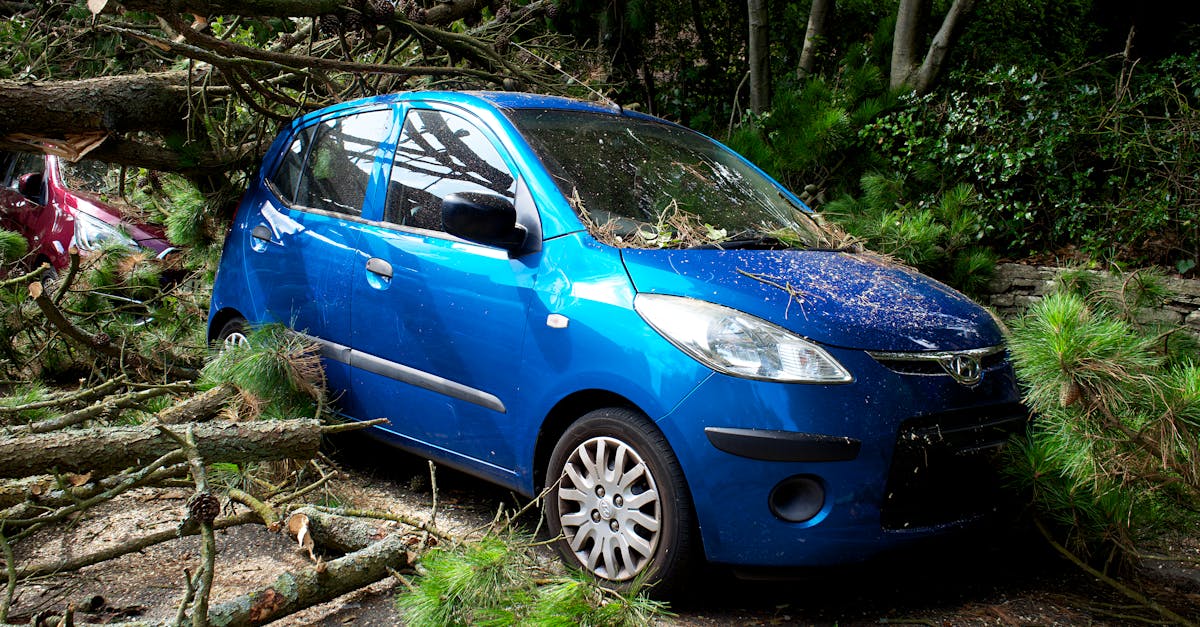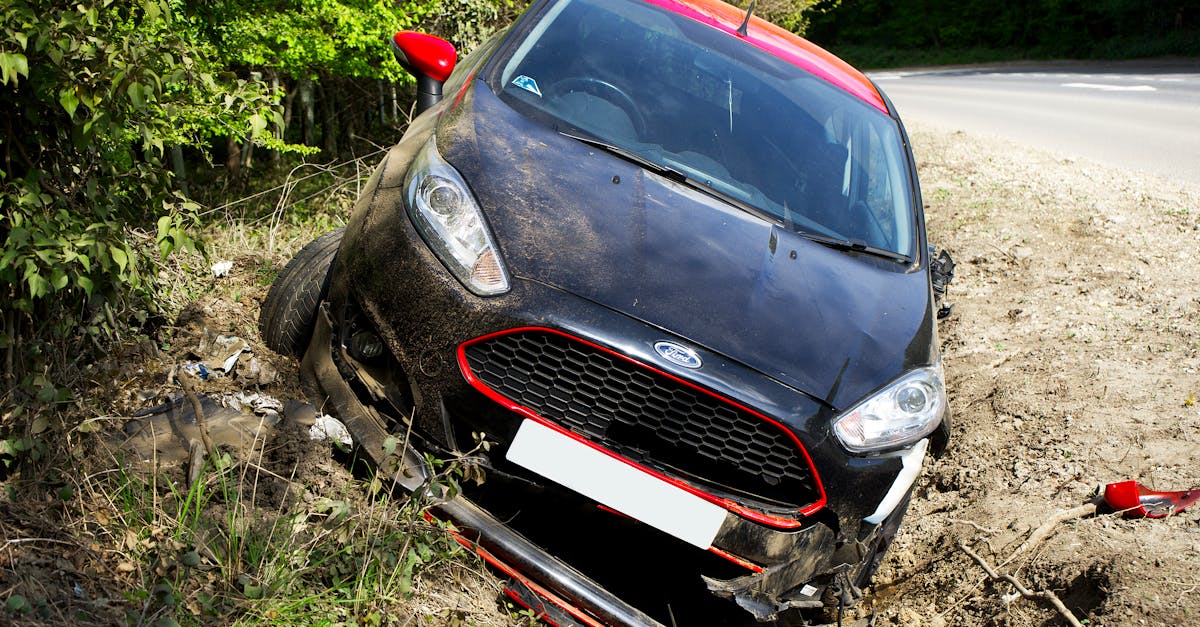Navigating the Maze: A Comprehensive Guide to Comparing Car Insurance Policies
Choosing the right car insurance can often feel like navigating a complex maze. With numerous options available, it’s crucial to understand how to effectively compare car insurance policies to find the best fit for your needs. Each policy offers different coverage levels, premiums, and exclusions, which can complicate your decision-making process. By taking a structured approach to compare car insurance quotes and understanding the nuances of each offer, you can make an informed choice. This guide will provide helpful insights and tips for evaluating your options, ensuring you not only save money but also secure the right protection for your vehicle. Let’s dive in and simplify this process together!
Main Points
- Understand different coverage types and their importance.
- Learn how to compare car insurance rates from various providers.
- Discover tools for compare car insurance online.
- Get tips for finding the best compare car insurance deals.

Understanding the Basics of Car Insurance: Key Terminology Explained
When it comes to car insurance, understanding the basic terminology can feel overwhelming. With so many terms and jargon, it’s easy to lose your way. But fear not! This guide will help clarify some essential concepts that can significantly impact your insurance choices. So, let’s dive in!
1. Premium
Your premium is the amount you pay for your car insurance coverage. It can be paid monthly, quarterly, or annually. Many factors influence your premium, including your driving history, the type of car you drive, and where you live. It’s important to compare car insurance quotes to ensure you’re not overpaying for your coverage.
2. Deductible
The deductible is the amount you must pay out of pocket before your insurance company covers the rest of the claim. For example, if you have a $500 deductible and incur a $2,000 claim, you would pay the first $500, and your insurer would cover the remaining $1,500. Generally, a higher deductible can lead to lower premiums, but it means more risk for you in the event of an accident.
3. Coverage Types
There are various types of coverage you need to be aware of:
- Liability Coverage: This mandatory coverage helps pay for damage to another person’s vehicle or medical expenses if you’re found at fault in an accident.
- Collision Coverage: This covers damage to your vehicle resulting from a collision with another car or object, regardless of fault.
- Comprehensive Coverage: This protects against non-collision-related incidents, such as theft, vandalism, or natural disasters.
Understanding these coverage types can significantly improve your decision-making process when shopping for policies.
4. Claims Process
Filing a claim is a crucial part of your car insurance experience. It’s how you request payment to cover damages after an incident. First, you report the accident to your insurer, provide details, and submit any supporting documents. The insurer will then investigate and determine the settlement. Remember, understanding the claims process can save you a lot of headaches down the line.
5. Comparing Quotes
Before making a decision, it’s essential to compare car insurance rates. This ensures you get the best deal tailored to your needs. Keep these tips in mind:
- Gather multiple quotes from different providers.
- Look at the coverage options each quote offers.
- Take note of the customer service ratings of each provider.
By thoroughly evaluating your options, you can ensure you’re getting the best compare car insurance deals available.
In conclusion, becoming familiar with car insurance terminology can simplify your purchasing process. Understanding these basics not only demystifies the process but also empowers you to make informed decisions. So take your time, do your research, and drive safely!

Types of Car Insurance Policies: Which One is Right for You?
Car insurance can feel overwhelming, especially with so many options available. Understanding the different types of car insurance policies is crucial for making an informed decision. It’s important to find a policy that fits your individual needs, and sometimes that means doing a bit of research. So, let’s break things down!
1. Liability Coverage
Liability coverage is often the minimum requirement in many states. It covers damages to another person’s property or injuries they sustain in an accident where you are at fault. However, while it’s a cost-effective choice, it won’t protect your own vehicle. If you have a newer car or a loan on your vehicle, this type of policy might not be sufficient. It’s essential to consider how much risk you’re willing to take on.
2. Collision Coverage
Collision coverage pays for damage to your vehicle resulting from a collision with another vehicle or an object. This is particularly useful for drivers who want to ensure their car is repaired regardless of fault. However, this type of coverage can also result in higher premiums, especially if you drive an expensive vehicle. Before opting for collision coverage, ask yourself if the cost aligns with the potential benefits.
3. Comprehensive Coverage
Comprehensive coverage is a step beyond collision. It protects against non-collision related incidents, such as theft, vandalism, or natural disasters. If you live in an area prone to severe weather or have a high-value car, comprehensive coverage can provide peace of mind. Yet, it often comes with a higher price tag. Consider your environment and lifestyle when deciding if this policy is right for you.
4. Personal Injury Protection (PIP)
PIP covers medical expenses for you and your passengers, regardless of fault. It can also cover lost wages and other related costs. In some cases, it’s mandatory; in others, it’s optional. If you frequently have passengers or are worried about healthcare costs after an accident, PIP might be a valuable addition to your policy. But it’s essential to weigh the benefits against the potential increase in premiums.
5. Uninsured/Underinsured Motorist Coverage
This type of coverage protects you if you’re in an accident with a driver who lacks sufficient insurance. In today’s world, it’s not uncommon to encounter uninsured drivers, so having this policy can be a safety net. While it does increase your premium, the protection it offers could save you significant financial trouble in the long run.
How to Compare Car Insurance Policies
When you’re ready to select a policy, knowing how to compare car insurance options is essential. Take advantage of online tools that allow you to compare car insurance online. These resources will help you sift through various providers and policies to find the best fit for your requirements. Keep an eye on deductibles, premiums, and coverage limits to ensure you make a well-informed decision.
Key Considerations
| Coverage Type | Pros | Cons |
|---|---|---|
| Liability | Affordable | Doesn’t cover your own damages |
| Collision | Covers your vehicle | Higher premiums |
| Comprehensive | Protection against various incidents | Expensive |
| PIP | Covers medical costs | May not be necessary for everyone |
| Uninsured/Underinsured Motorist | Protects you from uninsured drivers | Increases premium |
Finding the right policy may take time, but it’s worth the effort. Reflect on your driving habits, vehicle value, and the environment you live in. When you understand the types of car insurance available, you’re better positioned to select a plan that works for you. Always remember to compare car insurance providers for the best deal that fits your needs.

Factors Affecting Car Insurance Premiums: What You Need to Know
When it comes to purchasing car insurance, many factors play a crucial role in determining your premium. Understanding these factors can help you make informed decisions and perhaps save money in the long run. So, what exactly influences your car insurance cost? Let’s dive into the details.
1. Your Driving History
Your driving record is one of the key elements that insurers assess. A clean record with no accidents or traffic violations will typically result in lower premiums. However, if you have multiple incidents, your premium may increase significantly. It’s important to drive safely and adhere to traffic rules, as this not only keeps you safe but can also positively impact your insurance costs.
2. Type of Vehicle
The make, model, and age of your car can greatly affect your insurance cost. Generally, high-performance vehicles or luxury cars come with higher premiums due to their repair costs and theft rates. On the other hand, safer cars tend to attract lower rates. Therefore, before putting down money for a new car, consider how it will impact your ability to compare car insurance policies effectively.
3. Location Matters
Your geographical area can also influence your insurance premium. Urban areas tend to have higher rates due to increased risk factors such as theft or accidents. Conversely, rural areas usually see lower rates. It’s a complex web of variables, as crime rates, traffic conditions, and even weather patterns can all tie into how much you pay for your coverage.
4. Coverage Options
The type of coverage you select plays a vital role in your insurance costs. Opting for comprehensive coverage will naturally increase your premium, but it offers more extensive protection. Conversely, minimal coverage may lower costs but could leave you vulnerable in various situations. Therefore, it’s essential to carefully consider what level of coverage best suits your needs and budget.
5. Credit Score
Interestingly, your credit score can also impact your car insurance premium. Insurers often use this information to gauge risk. A higher score typically means lower premiums because insurers view you as a lower-risk client. However, if you have a poor credit history, you might face higher rates. Balancing your financial health can not only help you secure better insurance deals but can also ease your overall financial burden.
In conclusion, several factors affect your car insurance premiums, from your driving record to the vehicle type, location, coverage options, and credit score. Understanding these elements can empower you to compare car insurance policies effectively, ultimately helping you make the best decision for your situation. So, keep these factors in mind the next time you’re shopping for car insurance!

Comparing Coverage Options: Comprehensive vs. Liability Insurance
When it comes to protecting your assets, understanding the differences between comprehensive and liability insurance is crucial. These two types of coverage serve different purposes and cater to varying needs. This can often lead to confusion for many. So, let’s break it down clearly.
Liability Insurance: What You Need to Know
Liability insurance is designed to protect you from financial loss if you are found responsible for causing damage or injury to someone else. This type of insurance often includes:
- Bodily Injury Liability: Covers medical expenses for injuries to others resulting from an accident you caused.
- Property Damage Liability: Compensates for damage to another person’s property due to your actions.
- Legal Costs: Covers legal fees if you are sued due to an accident.
It’s important to note that liability insurance does not cover damages to your own vehicle or injuries to yourself. This is where comprehensive insurance steps in, offering a broader scope of protection.
Comprehensive Insurance: A Broader Safety Net
In contrast, comprehensive insurance provides coverage for a wider range of incidents, including:
- Non-Collision Damage: This covers damages from theft, vandalism, or natural disasters—situations that are not usually your fault.
- Animal Collisions: If your vehicle is damaged due to hitting an animal, comprehensive insurance typically covers it.
- Fire Damage: This coverage also includes damages incurred from fires, whether they originate from your vehicle or another source.
On the whole, comprehensive insurance offers a more extensive safety net compared to liability insurance. However, it usually comes at a higher premium. To complicate matters, the terms of each policy might differ significantly from one insurer to another, adding another layer of complexity.
Comparative Overview
| Coverage Type | What it Covers | Cost Implication |
|---|---|---|
| Liability Insurance | Injuries and damages to others | Generally lower premiums |
| Comprehensive Insurance | Various types of damage, including theft and natural disasters | Usually higher premiums |
In summary, choosing between comprehensive and liability insurance involves evaluating your specific needs and understanding how each type of coverage functions. While comprehensive insurance provides more extensive protection against a variety of risks, liability insurance is essential for legal protection against damages or injuries you may cause others. The decision is a balancing act between risk tolerance, financial implications, and personal circumstances.
The Role of Deductibles: How They Impact Your Premiums
When navigating the intricate world of insurance, one concept frequently arises: the deductible. It’s essential to understand its role and how it significantly influences your premiums. Many people find themselves puzzled by the relationship between these two elements, often leading to more questions than answers.
Understanding Deductibles
A deductible is the amount you must pay out of pocket before your insurance coverage kicks in. For instance, if you have a policy with a deductible of $1,000 and you incur a claim of $3,000, you would be responsible for the first $1,000. The insurance company would then cover the remaining $2,000. This arrangement might seem straightforward, yet it brings about a complex interplay between your potential savings and your overall costs.
How Deductibles Affect Your Premiums
In general, there’s a clear relationship between the deductible you choose and your insurance premiums. Higher deductibles usually lead to lower premiums, while lower deductibles typically result in higher premiums. But why is that the case? The rationale lies in risk. A higher deductible means you’ll handle more of the costs in the event of a claim. Thus, your insurance company is taking on less risk, allowing them to offer you a lower rate.
A Balancing Act
This brings us to a critical consideration. While opting for a higher deductible may reduce your monthly payments, it also increases your out-of-pocket expenses when claims arise. Consequently, if you rarely file claims, a higher deductible can indeed be beneficial. However, if you’re prone to needing your insurance, a lower deductible might save you money in the long run. Therefore, finding the right balance becomes vital.
Making the Choice
When deciding on your deductible, consider your financial situation and risk tolerance. Ask yourself the following questions: How much can I afford to pay out of pocket in the event of an emergency? Are there circumstances where a higher deductible might lead to financial strain? By contemplating these factors, you can make an informed decision that aligns with your needs.
Conclusion
In essence, understanding the impact of deductibles on premiums is crucial for anyone venturing into the realm of insurance. Striking the right balance involves a careful assessment of your financial situation and potential risks. Hence, don’t hesitate to seek professional advice if you’re feeling overwhelmed. By doing so, you can navigate these waters more confidently and make choices that truly benefit you.
Discounts and Savings: Maximizing Your Car Insurance Benefits
When it comes to car insurance, understanding how to leverage discounts and savings can significantly impact your overall expenses. Insurance companies often provide various incentives that can help lower your premiums. However, navigating these options can sometimes be overwhelming. Let’s break down some key insights that will aid you in maximizing your savings.
Understanding Available Discounts
Many insurers offer a range of discounts. For instance, you may be eligible for discounts based on your driving history, vehicle safety features, or even if you have completed a defensive driving course. Here are some common discount categories:
| Discount Type | Description |
|---|---|
| Safe Driver | Rewards drivers with a clean driving record. |
| Multi-Policy | Discount for bundling multiple policies with one provider. |
| Good Student | For drivers under 25 who maintain a high GPA. |
However, not all discounts are created equal. Some may not apply to your specific situation, thereby causing confusion. Don’t hesitate to ask your insurance agent for clarification on any discounts you may not understand.
Additional Strategies for Savings
In addition to seeking discounts, there are other strategies you can employ to ensure you are maximizing your car insurance benefits:
- Review Your Coverage Annually: It’s important to reassess your coverage regularly. Life changes such as moving, getting married, or even purchasing a new vehicle can alter your insurance needs.
- Consider Raising Your Deductibles: A higher deductible often leads to lower premiums, but make sure you can afford the deductible in case of a claim.
- Utilize Technology: Several insurers offer usage-based insurance that tracks your driving habits. If you’re a safe driver, this can result in significant savings.
“The first step to reducing your car insurance premiums is understanding the available discounts and how to qualify for them.”
It’s evident that savings on car insurance can come from a variety of places. However, staying organized and informed is vital. By keeping track of your discounts and reviewing your policy regularly, you can feel more confident that you’re getting the best deal possible.
In conclusion, the journey to maximizing your benefits doesn’t have to be daunting. Be proactive and take control of your car insurance situation. Each step you take towards understanding your discounts and savings can lead to a more secure financial future.
Using Online Tools to Compare Car Insurance Quotes Effectively
In today’s fast-paced world, finding the right car insurance can often feel like navigating a maze. With numerous options available, how do you ensure that you are getting the best deal? Using online tools offers an effective solution to this dilemma, providing a way to quickly compare quotes and find coverage that suits your needs and budget. But what should you keep in mind while using these tools? Let’s explore this further.
Understanding the Basics of Car Insurance Comparison
Before diving into online tools, it is essential to understand the basic elements that influence car insurance quotes. Factors such as your driving history, the type of vehicle you drive, and even your location can significantly affect the rates you receive. Consequently, when comparing quotes, it is crucial to ensure that you are comparing similar coverage levels. This isn’t only about the price; you also need to consider what each policy offers.
Steps to Use Online Tools Effectively
To maximize your search for the best car insurance, follow these simple steps:
- Gather Your Information: Collect necessary details such as your driver’s license number, vehicle identification number (VIN), and coverage preferences. Having this information handy will streamline the comparison process.
- Choose Reputable Comparison Websites: Utilize established online platforms dedicated to insurance comparisons. Look for sites that have a good reputation and transparent processes to ensure you get accurate quotes.
- Customize Your Search: Take advantage of the customization features offered by online tools. Specify your needs, such as minimum coverage, deductible amounts, and additional coverage options. This will help narrow down your choices.
- Review the Policy Details: Don’t be swayed by the premium alone. Examine the fine print for each policy. Conditions, exclusions, and coverage limits matter greatly and can differentiate two seemingly similar options.
- Seek Customer Reviews: Reading reviews from other customers can provide insights into the customer service and claim processes of different insurers. Quality service can make a significant difference in your overall experience.
- Get Everything in Writing: Once you find a policy that meets your needs, make sure to get the details in writing before committing. This protects you and provides clarity about what you are purchasing.
Common Pitfalls to Avoid
As with any process, there are pitfalls to be aware of when using online tools for insurance comparisons:
- Overlooking Coverage Needs: Focused solely on price, many individuals neglect to ensure adequate coverage. This could lead to costly consequences in the event of an accident.
- Choosing the Cheapest Option: While saving money is important, choosing the cheapest policy might result in compromised coverage and service quality.
- Failing to Update Information: As your circumstances change (like moving to a new location or buying a new car), remember to reassess your insurance needs and compare quotes again.
In conclusion, using online tools to compare car insurance quotes can save you time and money, provided you approach the process thoughtfully. By being informed about your needs and staying vigilant against common pitfalls, you’re more likely to secure a policy that not only fits your budget but also offers the protection you need. Don’t rush through the process; invest the time to find the coverage that serves you best.
Understanding Policy Limits: Finding the Right Balance for Your Needs
Navigating the complexities of policy limits can feel overwhelming. It’s crucial to understand how these limits affect your insurance coverage and overall financial security. When you enter into any kind of insurance agreement, be it auto, home, or health insurance, grasping the intricacies of coverage limits ensures you choose the right plan for your unique situation.
What Are Policy Limits?
At its core, a policy limit is the maximum amount your insurance provider will pay out for a covered claim. This limit can significantly influence how much you will receive following an incident, such as an accident or natural disaster. For example, if you have a home insurance policy with a coverage limit of $250,000, you will not receive more than that amount, regardless of the actual damages incurred. Therefore, it becomes essential to evaluate your needs and risks to determine the appropriate policy limit.
The Balance Between Cost and Coverage
Finding the right balance between cost and adequate coverage limits can often lead to confusion. On one hand, a low policy limit might save you money on premiums, but it can also expose you to significant financial risk in the event of a costly claim. Conversely, opting for high limits could lead to payments that budget-conscious individuals might find unsustainable.
| Type of Insurance | Minimum Limit | Recommended Limit |
|---|---|---|
| Auto Insurance | $25,000 | $100,000 |
| Homeowners Insurance | $100,000 | $300,000 |
| Health Insurance | $1 million | $5 million |
Understanding these limits will help clarify the amount of protection you can expect. However, one must also consider the nuances behind these numbers. Factors such as regional risks, personal assets, and health history will undoubtedly play a role in determining the coverage best suited for you.
Key Considerations When Choosing Policy Limits
To illustrate the point further, consider the difference between expected risks and unexpected events. Unexpected events—like natural disasters—can lead to massive losses that far exceed the limits you originally set. As a result, constantly reassessing your policy limits as your life circumstances change is essential. A growing family or a new career opportunity might require additional coverage.
In conclusion, while the terminology may sometimes lead to confusion, taking the time to understand your policy limits can be immensely beneficial. Engaging in discussions with your insurance agent can clarify any ambiguities you may have. Be proactive in assessing your needs and make informed choices regarding your coverage limits. Ultimately, the right policy can provide peace of mind, ensuring you’re safeguarded against life’s unpredictable twists and turns.
Tips for Switching Car Insurance Providers: A Step-by-Step Guide
Switching car insurance providers might seem daunting, but it can often lead to better coverage and significant savings. With so many options available, understanding the entire process is crucial. Here’s a detailed step-by-step guide to help you navigate the transition smoothly.
1. Evaluate Your Current Policy
Before you even think about switching, take a close look at your current policy. What coverage do you have? Are there any gaps in your protection? Understanding your existing coverage will help you identify what you might need in a new plan. Additionally, consider your current premium and whether it still aligns with your budget. Sometimes, the best decision is to stay put, but knowing your options can save you a significant amount.
2. Research New Insurance Providers
With your current policy in mind, it’s time to explore your options. Research various providers to find those that fit your needs. Look for customer reviews, financial ratings, and overall reputation. This step can be a bit overwhelming, as every company markets itself differently. However, focusing on customer service and claims handling can help you narrow down your search.
3. Obtain Multiple Quotes
Once you have a shortlist, request quotes from several insurance companies. The goal here is to compare not just the prices but also the coverage options. Sometimes, the cheapest option might not offer the best protection. When you analyze the quotes, pay attention to the deductibles and limits. This careful comparison can help you make an informed decision.
4. Understand the Terms and Conditions
When reviewing quotes, it’s essential to read the fine print. Understanding the terms and conditions of each policy will prevent any surprises later on. What is included in the coverage? Are there any exclusions? This part can indeed be tricky, as insurance jargon can confuse even the savviest consumers. Take your time to grasp the details, or consult an expert if necessary.
5. Cancel Your Current Policy
Once you’ve chosen a new provider, the next step is to cancel your current policy. Contact your existing insurer and inform them of your decision. Make sure to ask about any cancellation fees or refunds for unused premiums. Timing this step is also critical; you don’t want to have a lapse in coverage. Ensure that your new policy starts before canceling the old one to maintain seamless protection.
6. Finalize Your New Policy
After canceling your old policy, confirm your new coverage. Make sure all your details are correct and that you understand the payment terms. Most providers offer multiple payment options, so pick one that suits your financial situation. Then, enjoy the peace of mind that comes with your new policy!
7. Monitor Your Coverage Annually
Finally, don’t forget to review your new policy each year. Your needs may change, and it’s wise to reassess your coverage and premiums regularly. Remember, the goal is to provide yourself with the best possible protection at a fair price.
Switching car insurance providers doesn’t have to be a tedious process. By following these steps and focusing on what’s essential, you can find not just a better deal, but the right coverage for your needs. Happy insuring!
Conclusion
In summary, comparing car insurance policies can feel like a daunting task, but it doesn’t have to be. By taking the time to assess your specific needs and understanding the coverage options available, you can make an informed decision. Look beyond just the price; consider the reputation of the companies and the customer service they provide. This process is essential because the right policy will not only protect your vehicle but also give you peace of mind while driving. Ultimately, investing effort into how you compare car insurance will pay off, ensuring you find a policy that fits both your budget and your lifestyle.
Frequently Asked Questions
What factors affect car insurance rates?
Car insurance rates are influenced by factors such as your driving history, the type of car you drive, your age, location, and the amount of coverage you choose.
How can I lower my car insurance premium?
You can lower your car insurance premium by maintaining a clean driving record, taking advantage of discounts, increasing your deductible, and comparing quotes from different insurers.
What is the difference between full coverage and liability insurance?
Full coverage insurance typically includes both liability coverage and additional protections such as collision and comprehensive coverage, whereas liability insurance only covers damages to others if you are at fault in an accident.
Can I switch car insurance companies at any time?
Yes, you can switch car insurance companies at any time. However, make sure to finalize your new policy before canceling your existing one to avoid a lapse in coverage.
What is a deductible in car insurance?
A deductible is the amount you agree to pay out of pocket before your insurance coverage kicks in for a claim. A higher deductible usually lowers your premium.
Do I need car insurance if I don’t drive very often?
Yes, most states require some form of car insurance, regardless of how often you drive. It’s essential to maintain at least the minimum coverage required by law.
What should I do after a car accident concerning insurance?
After a car accident, you should document the incident, exchange information with the other party, contact your insurance provider to report the accident, and follow their guidance for filing a claim.
Is credit score considered in determining car insurance rates?
Yes, many insurance companies use credit scores as one of the factors to determine your rate, as they believe there is a correlation between creditworthiness and the likelihood of filing claims.
How often should I compare car insurance policies?
It’s advisable to compare car insurance policies at least once a year or whenever you experience major life changes, such as moving, getting married, or buying a new car.
What are common discounts I can find for car insurance?
Common discounts available for car insurance include multi-policy discounts, safe driver discounts, good student discounts, and discounts for cars with safety features.






